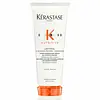Dove Men+Care Fortifying Strengthening Shampoo Versus Kérastase Nutritive Lait Vital Ultra-Light Detangling Conditioner
What's inside
What's inside
 Key Ingredients
Key Ingredients

 Benefits
Benefits

 Concerns
Concerns

 Ingredients Side-by-side
Ingredients Side-by-side

Water
Skin ConditioningSodium Laureth Sulfate
CleansingCocamidopropyl Betaine
CleansingParfum
MaskingDimethiconol
EmollientGlycol Distearate
EmollientSodium Benzoate
MaskingCitric Acid
BufferingCarbomer
Emulsion StabilisingCocamide Mea
EmulsifyingTea-Dodecylbenzenesulfonate
CleansingGuar Hydroxypropyltrimonium Chloride
Skin ConditioningDisodium EDTA
Trideceth-10
CleansingCyclotetrasiloxane
EmollientPhenoxyethanol
PreservativeLysine Hcl
Skin ConditioningCaffeine
Skin ConditioningClimbazole
AntimicrobialPPG-9
Skin ConditioningZinc Gluconate
Skin ConditioningIodopropynyl Butylcarbamate
PreservativeMethylchloroisothiazolinone
PreservativeMethylisothiazolinone
PreservativeWater, Sodium Laureth Sulfate, Cocamidopropyl Betaine, Parfum, Dimethiconol, Glycol Distearate, Sodium Benzoate, Citric Acid, Carbomer, Cocamide Mea, Tea-Dodecylbenzenesulfonate, Guar Hydroxypropyltrimonium Chloride, Disodium EDTA, Trideceth-10, Cyclotetrasiloxane, Phenoxyethanol, Lysine Hcl, Caffeine, Climbazole, PPG-9, Zinc Gluconate, Iodopropynyl Butylcarbamate, Methylchloroisothiazolinone, Methylisothiazolinone
Water
Skin ConditioningCetearyl Alcohol
EmollientGlycerin
HumectantCetyl Alcohol
EmollientBehentrimonium Chloride
PreservativePhenoxyethanol
PreservativeCeteareth-33
CleansingHydroxypropyl Guar
Emulsion StabilisingOctyldodecanol
EmollientCetrimonium Chloride
AntimicrobialIsopropyl Alcohol
SolventAmodimethicone
Sodium PCA
HumectantPanthenol
Skin ConditioningNiacinamide
SmoothingAscorbyl Glucoside
AntioxidantButylene Glycol
HumectantLinalool
PerfumingBenzyl Alcohol
PerfumingHydroxycitronellal
PerfumingHexyl Cinnamal
PerfumingCitronellol
PerfumingTrideceth-6
EmulsifyingCoumarin
PerfumingAlpha-Isomethyl Ionone
PerfumingGeraniol
PerfumingHydrolyzed Wheat Protein
Skin ConditioningHydrolyzed Corn Protein
Skin ConditioningHydrolyzed Soy Protein
HumectantIris Florentina Root Extract
MaskingCitric Acid
BufferingParfum
MaskingWater, Cetearyl Alcohol, Glycerin, Cetyl Alcohol, Behentrimonium Chloride, Phenoxyethanol, Ceteareth-33, Hydroxypropyl Guar, Octyldodecanol, Cetrimonium Chloride, Isopropyl Alcohol, Amodimethicone, Sodium PCA, Panthenol, Niacinamide, Ascorbyl Glucoside, Butylene Glycol, Linalool, Benzyl Alcohol, Hydroxycitronellal, Hexyl Cinnamal, Citronellol, Trideceth-6, Coumarin, Alpha-Isomethyl Ionone, Geraniol, Hydrolyzed Wheat Protein, Hydrolyzed Corn Protein, Hydrolyzed Soy Protein, Iris Florentina Root Extract, Citric Acid, Parfum
Ingredients Explained
These ingredients are found in both products.
Ingredients higher up in an ingredient list are typically present in a larger amount.
Citric Acid is an alpha hydroxy acid (AHA) naturally found in citrus fruits like oranges, lemons, and limes.
Like other AHAs, citric acid can exfoliate skin by breaking down the bonds that hold dead skin cells together. This helps reveal smoother and brighter skin underneath.
However, this exfoliating effect only happens at high concentrations (20%) which can be hard to find in cosmetic products.
Due to this, citric acid is usually included in small amounts as a pH adjuster. This helps keep products slightly more acidic and compatible with skin's natural pH.
In skincare formulas, citric acid can:
While it can provide some skin benefits, research shows lactic acid and glycolic acid are generally more effective and less irritating exfoliants.
Most citric acid used in skincare today is made by fermenting sugars (usually from molasses). This synthetic version is identical to the natural citrus form but easier to stabilize and use in formulations.
Read more about some other popular AHA's here:
Learn more about Citric AcidParfum is a catch-all term for an ingredient or more that is used to give a scent to products.
Also called "fragrance", this ingredient can be a blend of hundreds of chemicals or plant oils. This means every product with "fragrance" or "parfum" in the ingredients list is a different mixture.
For instance, Habanolide is a proprietary trade name for a specific aroma chemical. When used as a fragrance ingredient in cosmetics, most aroma chemicals fall under the broad labeling category of “FRAGRANCE” or “PARFUM” according to EU and US regulations.
The term 'parfum' or 'fragrance' is not regulated in many countries. In many cases, it is up to the brand to define this term.
For instance, many brands choose to label themselves as "fragrance-free" because they are not using synthetic fragrances. However, their products may still contain ingredients such as essential oils that are considered a fragrance by INCI standards.
One example is Calendula flower extract. Calendula is an essential oil that still imparts a scent or 'fragrance'.
Depending on the blend, the ingredients in the mixture can cause allergies and sensitivities on the skin. Some ingredients that are known EU allergens include linalool and citronellol.
Parfum can also be used to mask or cover an unpleasant scent.
The bottom line is: not all fragrances/parfum/ingredients are created equally. If you are worried about fragrances, we recommend taking a closer look at an ingredient. And of course, we always recommend speaking with a professional.
Learn more about ParfumPhenoxyethanol is a preservative that has germicide, antimicrobial, and aromatic properties. Studies show that phenoxyethanol can prevent microbial growth. By itself, it has a scent that is similar to that of a rose.
It's often used in formulations along with Caprylyl Glycol to preserve the shelf life of products.
Water. It's the most common cosmetic ingredient of all. You'll usually see it at the top of ingredient lists, meaning that it makes up the largest part of the product.
So why is it so popular? Water most often acts as a solvent - this means that it helps dissolve other ingredients into the formulation.
You'll also recognize water as that liquid we all need to stay alive. If you see this, drink a glass of water. Stay hydrated!
Learn more about Water